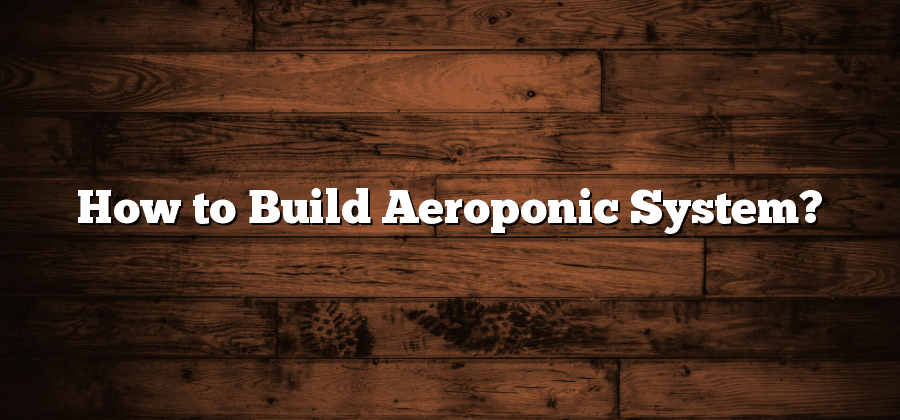Selecting the Ideal Reservoir
The reservoir is a critical component in any hydroponic system, as it serves as the storage for the nutrient solution that will provide the essential elements for plant growth. When selecting the ideal reservoir, there are several factors to consider.
First, you need to determine the size of the reservoir based on the number of plants you plan to grow and the frequency of nutrient solution changes. It’s important to choose a reservoir that is large enough to hold an adequate amount of nutrient solution for your plants to thrive, but not so large that it becomes difficult to manage or results in nutrient solution waste. Additionally, consider the available space in your growing area and select a reservoir that fits well and allows for easy access and maintenance.
Once you have determined the size, you need to decide on the material for the reservoir. Common options include plastic, fiberglass, and stainless steel. Each material has its advantages and disadvantages, so it’s important to weigh factors such as durability, cost, and compatibility with nutrient solutions. Furthermore, consider the lid or cover of the reservoir to prevent light penetration and discourage the growth of algae. Choosing a reservoir with a secure and light-blocking lid will help maintain the integrity of the nutrient solution and ensure optimal plant health.
Choosing the Right Pump for Nutrient Delivery
When it comes to hydroponic systems, choosing the right pump for nutrient delivery is crucial for the success of your garden. A pump is responsible for circulating the nutrient solution to the plants, providing them with the essential elements they need to thrive. It is important to select a pump that is not only reliable but also designed specifically for hydroponic applications.
One factor to consider when choosing a pump is its flow rate. The flow rate refers to the amount of nutrient solution that the pump can deliver per minute. The ideal flow rate will depend on the size of your hydroponic system and the specific needs of your plants. It is important to choose a pump with a flow rate that can adequately supply all of your plants with the necessary nutrients without causing any issues such as clogging or over watering.
Understanding the Importance of Mist Nozzles
Mist nozzles play a vital role in maintaining optimal growing conditions within a hydroponic system. These tiny, precision-engineered devices are responsible for evenly distributing a fine mist of nutrient solution throughout the grow area. The importance of mist nozzles lies in their ability to provide essential moisture and nutrients directly to the plant’s foliage, promoting efficient nutrient uptake and maximizing growth potential.
One of the key benefits of utilizing mist nozzles is their ability to create a high level of humidity in the grow environment. This is especially advantageous for plants that thrive in tropical or rainforest-like climates. By simulating these conditions, mist nozzles help to enhance transpiration, the process by which plants release water vapor through their leaves. Increased transpiration not only facilitates the absorption of nutrients but also aids in cooling the plants, preventing heat stress and optimizing overall plant health.
Aside from their impact on plant growth, mist nozzles also contribute to the overall aesthetic appeal of a hydroponic system. The fine mist that these nozzles produce creates a visually captivating effect as it envelops the plants, giving the grow area a tranquil and misty ambiance. This can be particularly enjoyable for indoor gardeners who value the serene atmosphere that such misty conditions create. Furthermore, mist nozzles can help to eliminate airborne particles and dust, cleansing the air and ensuring a clean and healthy growing environment for the plants.
Designing a Sturdy Support Structure
To ensure successful growth and stability of plants in your growing system, it is crucial to design a sturdy support structure. The support structure serves as the backbone for your plants, providing them with the necessary support to thrive and flourish. Without a well-designed support structure, plants may become vulnerable to bending, breaking, or even collapsing under the weight of their own foliage or the weight of the fruits they bear.
One key aspect to consider when designing the support structure is the type of plants you will be growing. Different plants have varying growth patterns and habits, and their support needs may differ accordingly. Some plants, such as tomatoes or cucumbers, tend to grow tall and require vertical support. Others, like sprawling vine varieties or leafy herbs, may benefit from horizontal structures that allow them to spread and climb. By studying the growth habits and needs of your plants, you can tailor the design of the support structure to best accommodate their specific requirements.
Selecting the Appropriate Growing Medium
When it comes to selecting the ideal growing medium for your plants, several factors need to be considered. First and foremost, it’s important to assess the specific needs of the plant species you intend to grow. Different plants have different requirements in terms of moisture retention, nutrient availability, and aeration. It is crucial to choose a growing medium that can provide the optimal conditions for your plants’ healthy growth and development.
Another crucial factor to consider is the overall quality and composition of the growing medium. A good growing medium should be well-draining, yet capable of retaining enough moisture for the plants’ root uptake. It should also have a balanced nutrient content and be free from any harmful pathogens or pests. In order to ensure the best results, it is advisable to use a certified growing medium or to create a custom blend that meets the specific needs of your plants. Always remember that the choice of growing medium plays a significant role in the overall success of your cultivation endeavor.






